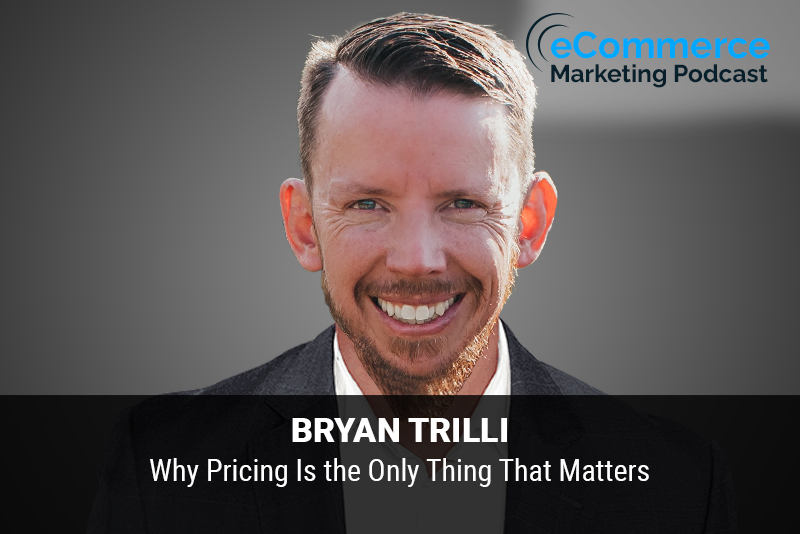
The eCommerce Marketing Podcast walks you through everything that goes into ecommerce marketing — from inbound marketing to paid advertising to conversions. Learn the strategies top marketing experts use to grow their businesses.
Bryan Trilli has bought or started 6 different businesses in 5 different industries in 4 different states from a brick-and-mortar service business to the #1 online company for computer vision training in the world. After running a successful lead-gen agency, Optimized Marketing, Bryan decided that if his team truly is great at marketing, they should cut out the middle-man and buy and build companies we control. That adventure led him down an unexpected path about the crucial importance of pricing strategy that we’ll be discussing today.
In this episode, you will learn
Why pricing is the most crucial aspect for an ecommerce business, and how it directly impacts a company’s success?
Strategies for determining the optimal price point for various products or services in an ecommerce business
How can ecommerce businesses balance competitive pricing with profitability, especially when competing with major players like Amazon and Walmart
What role does pricing psychology play in shaping consumer behavior and driving sales? Are there any key psychological principles that ecommerce businesses should keep in mind when setting their prices
Examples of some ecommerce brands that have set optimal pricing and have achieved success because of this
For show transcript and past guests, please visit https://www.ecommercemarketingpodcast.com
Or on YouTube at:
https://www.youtube.com/channel/UC3PgT0NOGzpdPGQtBK0XLIQ
Follow Arlen:
Twitter: https://twitter.com/askarlen
Facebook: https://www.facebook.com/arlen.robinson.7
Instagram: https://www.instagram.com/arlenyohance/
LinkedIn: https://www.linkedin.com/in/arlenrobinson/
Past guests on the ecommerce marketing podcast include Neil Patel, Nemo Chu, Luke Lintz, Luke Carthy, Amber Armstrong, Kris Ruby and many more.
Thanks for listening. Be sure to subscribe and leave a review.

Title: The Crucial Importance of Pricing Strategy with Bryan Trilli
Guest: Bryan Trilli, Founder of Optimized Marketing
Host: Arlen Robinson
In this episode of the eCommerce Marketing Podcast, Arlen Robinson sits down with Bryan Trilli, Founder of Optimized Marketing. Bryan has extensive experience in buying and starting multiple businesses across different industries and states. He shares his insights on the critical role of pricing strategy in e-commerce, drawing from his diverse entrepreneurial background.
Key Takeaways:
- [00:04:05] Importance of Pricing:
- Pricing is crucial for both immediate cash flow and long-term value. Consider the lifetime value of customers when setting pricing strategies.
- [00:06:47] Subscription Models:
- Different pricing structures (one-time, annual, monthly) have varying impacts on revenue and customer retention. Analyze which model works best for your business.
- [00:08:10] Competitive Pricing with Major Players:
- Competing with giants like Amazon and Walmart requires unique value propositions. Focus on packaging and offering services that large corporations can’t replicate easily.
- [00:13:02] Creative Pricing Strategies:
- Implement creative pricing strategies such as subscriptions, bundling, and added services to stand out and provide unique value to customers.
- [00:17:22] Psychological Impact of Pricing:
- Understand the psychology behind pricing. Factors like perceived value, urgency, and scarcity play a significant role in consumer behavior.
- [00:26:22] Case Studies of Successful Pricing Strategies:
- Examples of businesses successfully using optimal pricing strategies include recurring revenue models and value-added services that enhance customer loyalty and increase lifetime value.
Guest Info:
- Bryan Trilli
- Founder of Optimized Marketing
- LinkedIn: Bryan Trilli
- Email: [email protected]











